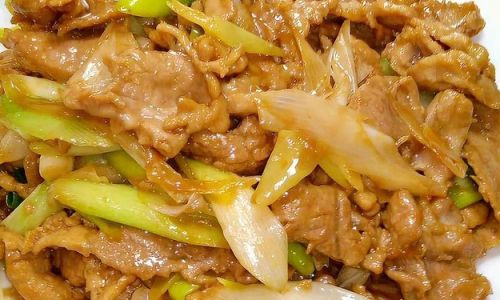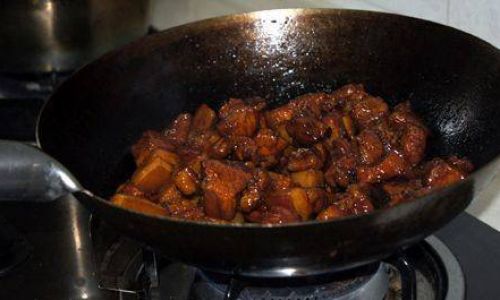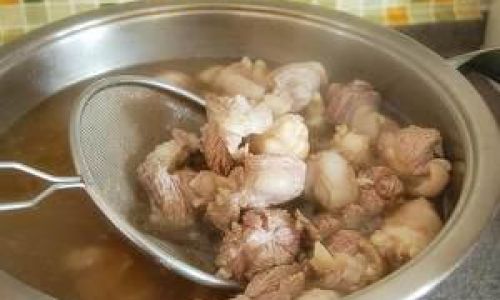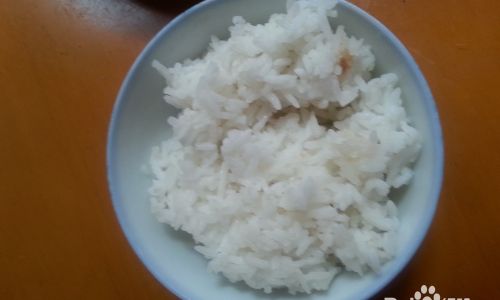Introduction

Stir-frying pork slices is a classic dish in many cuisines around the world, particularly in Asian cooking. It’s a versatile meal that can be enjoyed on its own, paired with rice or noodles, or incorporated into a larger stir-fry. The beauty of stir-frying pork slices lies in its simplicity and the ability to elevate the flavor with just a few ingredients and techniques. In this guide, we’ll explore how to stir-fry pork slices in a way that’s both easy and delicious, ensuring you get tender, juicy, and flavorful results every time.
Section 1: Choosing the Right Pork
Before you dive into the stir-frying process, it’s crucial to start with the right type of pork. Different cuts have varying textures and flavors, and choosing the appropriate one can make a significant difference in your final dish.
1 Pork Shoulder
Pork shoulder is a popular choice for stir-frying due to its balance of fat and lean meat. The fat content helps to keep the meat moist during cooking, resulting in tender and juicy slices. Look for pork shoulder that has a good marbling of fat throughout.
2 Pork Tenderloin
While pork tenderloin is leaner, it can still be a good option if you prefer a healthier dish. However, because it has less fat, it’s essential to cook it quickly over high heat to avoid drying it out. Tenderloin slices should be thinly cut to ensure even cooking.
3 Pork Belly
For those who love a bit of indulgence, pork belly offers a rich and flavorful option. The fat cap adds a luxurious texture and depth of flavor. When stir-frying pork belly, be mindful of the cooking time to avoid overcooking the fat, which can become greasy.
Section 2: Preparation Techniques
Once you’ve selected your pork, it’s time to prepare it for stir-frying. Proper preparation is key to achieving tender and flavorful results.
1 Slicing the Pork

The thickness of your pork slices will greatly impact the cooking time and texture. For stir-frying, aim for slices that are about 1/4 inch (6 mm) thick. This thickness allows for quick cooking while still retaining moisture and flavor.
Use a sharp knife to slice the pork against the grain. This means cutting perpendicular to the muscle fibers, which helps to tenderize the meat and make it more palatable.
2 Marinating
Marinating your pork slices can add an extra layer of flavor and help to tenderize the meat. A simple marinade of soy sauce, rice vinegar, garlic, ginger, and a touch of sugar or honey can work wonders. Let the pork sit in the marinade for at least 30 minutes, preferably in the refrigerator, to allow the flavors to meld.
3 Tenderizing
If you want an extra tender texture, you can tenderize the pork slices using a meat mallet or the back of a knife. Lightly pounding the meat helps to break down the muscle fibers, making it more tender and easier to chew.
Section 3: Stir-Frying Techniques
Now that your pork is prepared, it’s time to get stir-frying. The key to successful stir-frying lies in the use of high heat, a well-seasoned wok or skillet, and the right cooking oil.
1 Heating the Pan
Preheat your wok or skillet over high heat until it’s very hot. This is crucial for creating a sear on the pork slices, locking in juices and flavor. A hot pan also ensures that the meat doesn’t stick and that you achieve an even cook.
2 Choosing the Right Oil
The type of oil you use can make a big difference in the flavor and texture of your stir-fry. Oils with a high smoking point, such as peanut oil, avocado oil, or grapeseed oil, are ideal for stir-frying. They can withstand high temperatures without smoking or breaking down, providing a clean flavor and a good cooking surface.

3 Stir-Frying the Pork
Add a small amount of oil to the preheated wok or skillet. Swirl the oil around to coat the bottom evenly. When the oil is hot but not smoking, add your pork slices in a single layer, avoiding overcrowding. This ensures that each slice has direct contact with the hot surface, promoting even cooking.
Leave the pork slices undisturbed for about 30 seconds to 1 minute on each side, allowing them to develop a nice sear. Once they’ve browned nicely, start stirring occasionally to cook the meat through. Depending on the thickness and type of pork, this should take about 3 to 5 minutes.
4 Adding Aromatics and Vegetables
Once the pork is nearly cooked, clear a space in the wok or skillet and add your aromatics, such as garlic, ginger, and scallions. Stir-fry these for about 30 seconds until fragrant, then mix them with the pork.
Next, add your vegetables. The choice of vegetables is entirely up to you, but common options include bell peppers, broccoli, snap peas, and carrots. Cut the vegetables into bite-sized pieces and add them to the wok or skillet. Stir-fry until they are tender-crisp, about 2 to 3 minutes.
5 Seasoning and Sauce
As the vegetables cook, you can add a sauce to finish your stir-fry. A simple sauce made from soy sauce, oyster sauce, sesame oil, and a splash of water or chicken broth can be poured over the pork and vegetables. Stir well to coat everything evenly with the sauce.
Taste and adjust the seasoning with additional soy sauce, salt, or pepper as needed. Remember that the sauce should complement the flavors of the pork and vegetables, not overpower them.
Section 4: Serving and Enjoying
Once your stir-fry is cooked to perfection, it’s time to serve and enjoy. Here are a few tips for presenting and serving your dish.
1 Plating

Transfer your stir-fried pork and vegetables to a serving dish. For a visually appealing presentation, arrange the ingredients in an attractive manner, perhaps with a garnish of chopped herbs or a drizzle of sesame oil.
2 Pairing with Sides
Stir-fried pork slices can be enjoyed on their own, but they also pair well with a variety of sides. Steamed rice or noodles are classic choices that soak up the delicious sauce. You could also serve your stir-fry with a side of stir-fried greens, pickled vegetables, or a simple salad.
3 Leftovers
If you have leftovers, don’t worry—stir-fried pork slices can be easily repurposed. They can be added to soups, stir-fries, or even used as a filling for wraps or sandwiches.
Conclusion
Stir-frying pork slices is a quick, easy, and delicious way to enjoy a satisfying meal. By choosing the right pork, preparing it properly, and using the correct stir-frying techniques, you can create a dish that’s tender, juicy, and bursting with flavor. Whether you’re cooking for yourself, your family, or friends, stir-fried pork slices are sure to impress.
Remember, the beauty of stir-frying lies in its versatility. Feel free to experiment with different marinades, sauces, and vegetables to suit your taste preferences. With a bit of practice, you’ll soon be able to whip up a delicious stir-fry in no time, making it a go-to dish for busy weeknights or special occasions.
So, the next time you’re in the mood for a simple yet delicious meal, give stir-fried pork slices a try. With the tips and techniques outlined in this guide, you’ll be well-equipped to create a stir-fry that’s sure to delight your taste buds and satisfy your hunger.
Happy stir-frying!
This guide covers the essentials of stir-frying pork slices, from choosing the right pork to preparation techniques, stir-frying methods, and serving suggestions. By following these steps, you’ll be able to create a delicious and satisfying dish that’s perfect for any occasion. Enjoy your culinary adventures!






0 comments